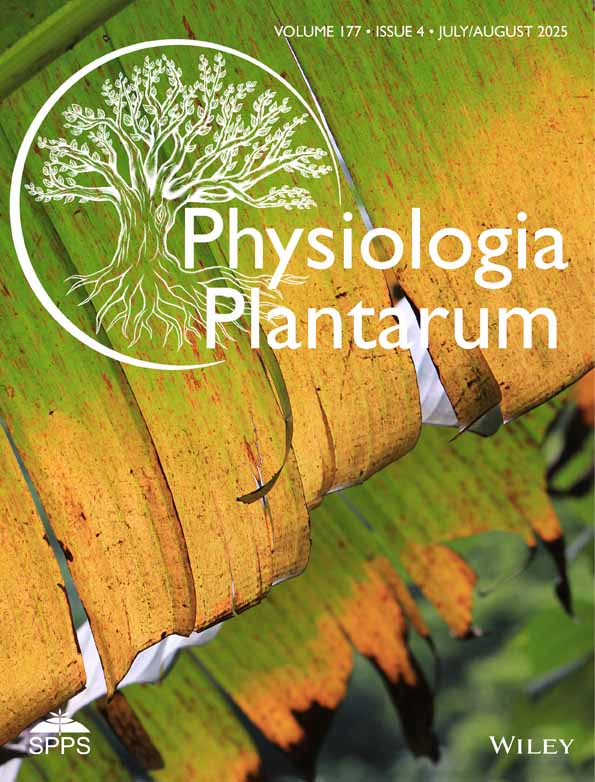Auxin metabolism and rooting in young and mature clones of Sequoia sempervirens
Abstract
The capacity of young and mature Sequoia sempervirens clones to produce roots in vitro was studied after wounding and indole-3-butyric acid (IBA) treatments. Rooting was not observed in mature or in young cuttings cultivated for 30 days in medium without IBA. The presence of 25 μM IBA in the medium resulted in the appearance of roots at the base of the cuttings. More roots appeared and grew faster on cuttings of the young than on the mature clone. This difference in rooting capacity between young and mature cuttings may be related to differences in the hormone levels at the base of the 5 mm long cuttings during the first 4 days of the root inductive period. After HPLC fractionation. IAA. IBA and related compounds, including indole-3-aspartic acid (IAAsp) and IBA-glucose ester (IBA-GE), were determined by MS and MS-MS and their levels measured by ELISA. Another immunoreactive compound was also found and determined to be N,N-dimethyltryptophan (DMT), a compound previously reported to inhibit auxin-enhanced ethylene production. Wounding of the stem without IBA treatment revealed a transient increase in IAA, IAAsp and DMT levels in young cuttings while a dramatic increase in the levels of DMT was observed in mature cuttings. Following IBA treatment. IAA levels increased in both clones, but higher levels were measured in the young than in the mature clone. IBA and IBA-GE were also found but in higher levels in the mature clone. Thus, the difficult-to-root mature clone differs from the young clone in its auxin metabolism.
Abbreviations
-
- CAD
-
- collisional activated dissociation
-
- CI
-
- chemical ionization
-
- DCI
-
- desorption chemical ionization
-
- DMT
-
- N,N-dimethyltryptophan
-
- EI
-
- electron impact
-
- IA Asp
-
- indole-3-acetylaspartic acid
-
- IBA
-
- indole-3-butyric acid
-
- IBA-GE
-
- indole-3-butyric acid glucose ester
-
- NAA
-
- naphthylacetic acid




